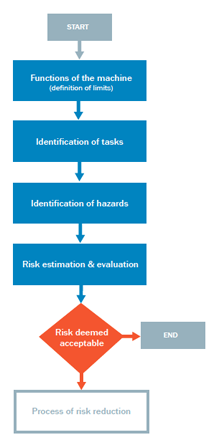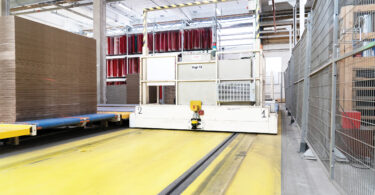Assessing Risk to Ensure Safety
Increased throughput, greater cost savings and improved reliability are just a few of the reasons for installing a new machine or system in your facility. And, while it's important to focus on the possibilities offered by a new, automated system, it is just as important to evaluate and assess the risks.
These risks, which may result in injuries, fines and lost productivity, may ultimately end up costing you more down the road.
Therefore, by determining the potential safety risks each machine may pose and appropriately rectifying any issues, you can greatly reduce accidents and any resulting downtime. Fortunately, qualified experts are available specifically for this purpose.
Risk Assessment
As part of SICK's LifeTime Services, SICK-certified Safety Applications Specialists help ensure facilities meet the latest safety requirements. Through frequent trainings, certifications and continued education courses, SICK safety experts are aware of the most recent information regarding safety laws, standards and guidelines.
To reduce accidents, safety experts first perform a risk assessment.
Risk assessments for machines are designed to identify and evaluate any potential risks. Once identified, protective measures are often required to protect operators and other individuals from hazards. Each risk assessment follows a sequence of logic steps.
Below are the main steps involved in a Risk Assessment.
Step 1: Initial Safety Consultation
An initial safety consultation with a SICK Safety Expert helps to identify and prioritize potential machine hazards. This initial meeting provides a brief look at some of the problems that may require additional safety implementation before a more comprehensive assessment of the environment is completed.
Step 2: Machine Guarding Risk Assessment
Due to the complex and sometimes dangerous movements of many of today's industrial machines, it is necessary to assess, evaluate and rectify any potential risks to protect operators and other individuals who may come in contact with the machines. From determining the functions of the machine to reducing potential risks (and everything in between), safety experts go through the following steps to identify potential hazards:
- Define the functions of the machine and identify any foreseeable misuse or malfunctions
- Identify the tasks to be completed by the machine and the hazards of each task
- Identify the mechanical, electrical, thermal and other hazards, such as cutting, shearing, crushing and stabbing
- Estimate and evaluate the risk of a machine work cell or production line during setup, operation, maintenance and cleaning
Each of the above procedures is in compliance with ANSI B11.0:2010, ISO 12100 and any corporate risk assessment processes.
Step 3: Risk Assessment Report
Once the assessment has been completed, a Risk Assessment Report is provided, which gives a comprehensive overview of what risks should be addressed and possible solutions. A drawing of the machine or process line is also provided as a visual guide for addressing any risks.
Each report includes the following:
- Scope of assessment, machine overview and functional description, documented methodology, participants/interviewees
- Assumptions/notes made by the risk assessment team
- Tasks and hazards listed based on human interactive with a machine and an associated risk score category
- Proposed solutions and risk reduction strategy
- PLr/SIL level for all safety-related parts of the control system
- Estimated residual risk rate
Why Is a Risk Assessment Necessary?
Determining potential risks and areas for improving safety not only reduce downtime and expenses, but also help to protect your most valuable assets: your people. Working with knowledgeable, highly trained professionals helps you eliminate costly hazards, quickly resolve problems and improve productivity and throughput.
For additional information about SICK's Risk Assessment Services, download our Risk Assessment Overview brochure or contact SICK LifeTime Services today.





